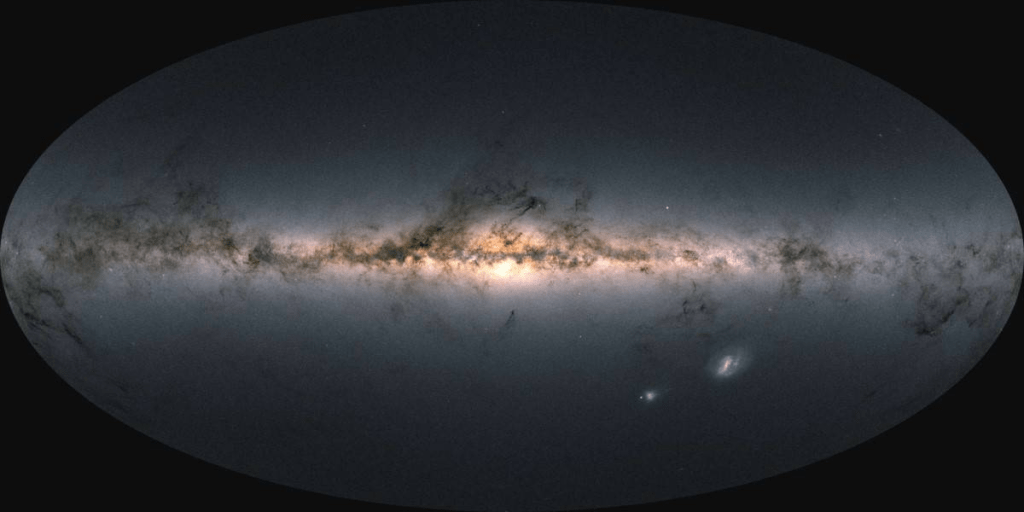Should be good as long as we don’t send out a map
TL;DR
Astronomers reveal that detecting Earth via photometric microlensing poses significant challenges for advanced alien civilizations. Despite Earth being a habitable planet, its location and proximity to the Sun make it nearly invisible to potential extraterrestrial observers. Microlensing, though effective at long distances, requires precise alignment, which occurs rarely. The study identifies key regions, such as the Magellanic Clouds, where the likelihood of Earth detection is highest, but even there, the chances are slim. Advanced alien technology beyond our current capabilities would be required for a successful discovery.
Don’t forget to join the discussion below!
_______________
Earth is largely hidden from extraterrestrial civilizations using photometric microlensing to search for habitable planets, according to an international team of researchers. Their findings could guide efforts to pinpoint the best areas in the galaxy to focus on in the search for extraterrestrial intelligence (SETI).
Astronomers utilize several methods when searching for planets that might support life outside our solar system. The most successful technique so far has been the transit method, responsible for about 75% of exoplanet discoveries. This method involves monitoring the periodic dimming of a star’s light as a planet passes in front of it from the observer’s point of view.

However, the transit method has limitations, primarily because transits only occur for planets with orbital planes almost perfectly aligned with Earth. Another method, photometric microlensing, takes advantage of gravitational lensing. When one star passes in front of another, the gravitational field of the nearer star magnifies the light from the more distant one. If the nearer star has an orbiting planet, the light can be further disturbed, producing detectable spikes.
One key advantage of microlensing is that it works over long distances. Most other detection methods have found planets within one kiloparsec (around 3200 light-years) of Earth, while microlensing has identified 130 exoplanets, some located up to seven kiloparsecs away. Given that the Milky Way spans roughly 30 kiloparsecs, it is conceivable that advanced civilizations could use microlensing to detect Earth from across vast galactic distances.
Some scientists have theorized that the regions from which Earth can be detected via the transit method are prime candidates for targeted SETI searches, based on game theory’s “Schelling Point,” where two parties attempt to locate each other without direct communication. Applying this logic to microlensing could reveal new, distant SETI search targets.
In a recent study, astronomer Eamonn Kerins of the University of Manchester and his colleagues analyzed how Earth’s microlensing signal might appear to alien civilizations.
The team introduced the concept of the “Earth Microlensing Zone” (EMZ), regions of the galaxy where Earth’s microlensing signal would be most visible. The EMZ serves as a microlensing counterpart to the “Earth Transit Zone” (ETZ), where Earth’s transit across the Sun could be observed. Using data from the European Space Agency’s Gaia telescope, specifically its second data release (DR2) with information on over 1.1 billion stars, the researchers mapped out areas where Earth’s microlensing signal could be detected.
The results showed that even if technologically advanced alien civilizations existed around each star in the study, the probability of Earth being detected via microlensing would be very low, with only 14.7 potential observers per year across the sky. This suggests that, assuming intelligent life is rare, it is highly unlikely Earth has been discovered through microlensing.
Kerins noted that Earth is a challenging target for detection because its proximity to the Sun makes it a weak lensing signal. Additionally, Earth’s location—27,000 light-years from the center of the Milky Way—places it in a “blind spot” for potential observers using microlensing.
For an alien civilization to detect Earth, it would need to be positioned where many background stars align with Earth, increasing the chances of Earth deflecting light from one of them. According to Kerins, the best vantage point would be near the edge of the galaxy, with Earth in line with the galactic center. However, there are very few stars at the galaxy’s edge, meaning few potential observers.
The team identified the top 1% of EMZ regions, including areas in the Large and Small Magellanic Clouds and low galactic latitudes near the galactic center, which overlap with ETZs.
The researchers concluded that Earth remains largely undetectable to photometric microlensing unless alien observers possess far greater sensitivity than we currently do.
Martin Dominik, an astrophysicist at the University of St Andrews, who was not involved in the study, commented that while advanced aliens might use gravitational microlensing to find candidate planets, they would struggle to detect Earth unless they were in a narrow region near the ecliptic plane. This limitation makes the prospect of interstellar communication through microlensing unlikely.
The study was published in Monthly Notices of the Royal Astronomical Society.





Ah, that explains why we haven’t been colonized, I guess.
Extraterrestrial civilizations hunting for habitable planets HATE this one weird trick!
This is Carl Sagan’s take on the malevolence of others species.
Cosmos chapter XII – “It is pointless to worry about the possible malevolent intention of an advanced civilization with whom we might make contact. It is more likely that the mere fact they have survived so long means they have learned to live with themselves and others. Perhaps our fears about extraterrestrial contact are merely a projection of our own backwardness, an expression of our guilty conscience about our past history: the ravages that have been visited on civilizations only slightly more backward than we.”
Except for all the Seinfeld reruns that we have beamed out into the universe.
Thank you I have just been searching for information approximately this topic for a while and yours is the best I have found out so far However what in regards to the bottom line Are you certain concerning the supply
What i do not realize is in fact how you are no longer actually much more wellfavored than you might be right now Youre very intelligent You recognize thus considerably in relation to this topic made me in my view believe it from numerous numerous angles Its like men and women are not fascinated until it is one thing to do with Lady gaga Your own stuffs excellent All the time handle it up